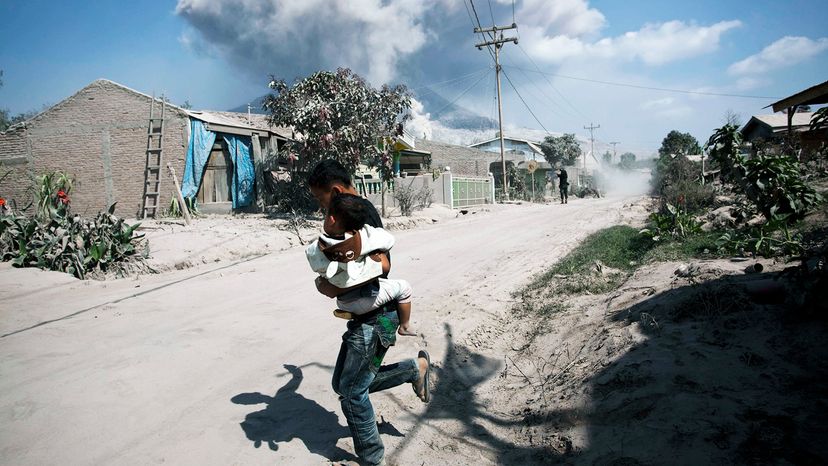
It's a familiar cinematic situation: A handsome, daring scientist arrives in town to study the local volcano, which has been dormant for centuries but now seems dangerously close to erupting. Despite the dire warnings of everyone around him, the intrepid volcanologist — perhaps with his trusty (and attractive) female assistant in tow — insists on scaling the mountain to more closely examine its condition.
But just as the pair arrives at the gaping crater, it blows, sending them running hand-in-hand down the slope, barely staying ahead of a raging river of hot lava. Or maybe they're in a Jeep, speeding down the mountain with the lava close behind.
Advertisement
Seeing any number of these exhilarating scenes might leave you wondering: What would happen if I suddenly needed to escape from an erupting volcano? Could I outrun the lava and make it to safety? Well, technically, yes. If lava were all you had to deal with while scrambling down the side of a fiery mountain, you might be in the clear.
Most lava flows — especially those from shield volcanoes, the less explosive type found in Hawaii — are pretty sluggish. As long as the lava doesn't find its way into a tube- or chute-shaped valley, it will probably move slower than a mile per hour. The lava flow from the Mauna Loa eruption of 1950 was clocked at 6 mph (9 kph), but you probably wouldn't have trouble scurrying away from that [source: Hawaiian Volcano Observatory].
There have been examples of fast-moving lava, but they're few and far between — like when the Democratic Republic of Congo's Mount Nyiragongo erupted in 1977 and its lava raced down at 40 mph (64 kph), killing 2,000 people [source: Derbyshire].
The unfortunate truth is lava will be the least of your worries, if you're close enough to an erupting volcano that you're thinking about running for your life. Contrary to what we might see in the movies, the dangers of a volcanic eruption are not confined to burning-hot lava. Even if you could stay ahead of the lava, you'd never survive the pyroclastic flow, an unimaginably hot, fast-moving cloud of ash, rock, gas and debris that wipes out everything in its path. Pyroclastic flows (the worst of which come from the more dramatically explosive composite volcanoes), generally move at speeds greater than 60 mph (96 kph) and reach temperatures between 392 and 1,292 degrees Fahrenheit (200 and 700 degrees Celsius) [source: USGS].
By many estimates, the pyroclastic flow from the Mount Vesuvius eruption in 79 A.D. reached 450 mph (700 kph) [source: BBC]. There's obviously no way anyone's outrunning that. And if the pyroclastic flow happens to melt snow or a glacier, this creates a lahar: an extra-deadly, concrete-thick mudslide/avalanche combo.
So, if you one day find yourself flirting with danger on the rim of an erupting volcano, we hate to say it but ... you're toast.
Advertisement